Aquatic Adaptation Superpower Guide

Aquatic Adaptation Video Demo 🎬
Table of Contents
- Aquatic Adaptation Video Demo 🎬
- What Is Aquatic Adaptation
- Core abilities of Aquatic Adaptation
- Application / Tactical Advantages in Combat
- Level: Level 1 🏙️, Level 2 🌇, Level 3 🌃
- Limitations of using the Aquatic Adaptation
- Weakness against what other superpowers
- Synergistic Power Combos
- Known Users
Aquatic Adaptation is the superpower that enables a person to function as efficiently underwater as on land—often better. Characters with Aquatic Adaptation gain traits like underwater breathing, water pressure resistance, enhanced swim speed, hydrodynamic movement, and specialized senses tuned for murky depths. This guide breaks down how the ability works, its combat applications, levels of mastery, limitations, counters, and synergistic combos. For more abilities and related powers, explore the full list in our superpower wiki, or spark ideas with our random superpower generator.
What Is Aquatic Adaptation
Aquatic Adaptation is an evolved or augmented physiology optimized for life in aquatic environments. Users may develop functional gills or enhanced lungs for long-duration apnea, a hydrodynamic body that reduces drag, increased muscle efficiency for powerful propulsion, and sensory upgrades such as low-light vision or lateral-line style current detection. At higher tiers, some wield sonar navigation, amphibious physiology that handles both fresh and salt water, and deep-sea adaptations that resist crushing pressure and cold.
Unlike elemental control over water, this power focuses on the body’s capability to survive and excel underwater. It often appears alongside related traits—salinity tolerance, temperature regulation, marine camouflage, and specialized communication—allowing the user to thrive from coral shallows to abyssal trenches.
Core abilities of Aquatic Adaptation
Underwater breathing
Many users possess gills that extract dissolved oxygen, enabling indefinite underwater breathing. Others modify respiration to extend breath-holding for hours. This includes efficient oxygen storage in blood and muscle, CO₂ buffering, and controlled metabolic rates to limit oxygen demand.
Water pressure resistance and depth adaptation
Depth adaptation allows safe descent to extreme pressures. Structural reinforcement of bones and connective tissue, collapsible air spaces, and pressure-stable biochemistry prevent barotrauma. Advanced users can operate at hadal depths without impairment.
Enhanced swim speed and hydrodynamic agility
Streamlined morphology—flexible spine, powerful core, and webbed digits—translates to superior swim speed and acceleration. Microtextured skin or a mucosal boundary layer reduces turbulence and drag, enabling rapid course changes, tight turns, and vertical bursts.
Aquatic senses
Low-light and turbid-water vision help in dim or silty environments. Some users gain a lateral-line analogue to detect movement and pressure gradients, while elite practitioners develop echolocation for mapping structures and tracking targets through sonar pings.
Amphibious physiology
Salinity tolerance lets the body maintain fluid balance across fresh and salt water. Thermoregulation and cold resistance mitigate hypothermia during long dives. Protective eyelids or nictitating membranes shield against particulates and high-speed flow.
Marine camouflage and stealth
Chromatophore-like pigmentation or refractive skin patterns break up outlines. Users can hug thermoclines, ride currents, and minimize wake signatures to remain unseen by patrols or drones. Noise discipline and bubble-free propulsion enhance silent approaches.
Environmental awareness and navigation
Intuitive current reading, tide timing, and geomagnetic sensitivity allow fast route planning even in featureless blue. Expert navigators use seafloor contours, thermohaline layers, and acoustic landmarks for reliable return paths.
Underwater communication
Click-codes, hand signals, and low-frequency hums travel farther underwater than normal speech. Advanced users transmit focused sonar bursts for encrypted short-range communication and target marking.
Application / Tactical Advantages in Combat
Mobility and battlespace control
In the ocean, lakes, rivers, and flooded infrastructure, Aquatic Adaptation converts the environment into home turf. Users maneuver in full 3D, exploit cover behind kelp forests, wrecks, or reef walls, and use currents to slingshot into striking distance.
Stealth, ambush, and cover
Marine camouflage and low acoustic signatures allow surprise engagements. Fighters can approach from below thermoclines, masking heat and sound, then breach with grapples or trident thrusts before opponents can track.
Grappling and positioning
Buoyancy control and jet-like accelerations create decisive advantage in clinches. Users can spiral an enemy into vortices, apply locks that leverage water resistance, or force opponents into pressure zones and hazardous obstacles.
Terrain manipulation (indirect)
While Aquatic Adaptation alone doesn’t bend water, it leverages natural dynamics—rip currents, surge channels, and surf—to isolate targets or separate squads. In confined flooded spaces, agile swimmers can bait foes into silt clouds that blind sensors.
Recon, rescue, and infiltration
Silent movement and extended stamina enable long-range reconnaissance of harbors, rigs, and submarines. Search-and-rescue roles benefit from rapid victim location via current detection and sonar mapping. Amphibious physiology supports beachhead insertions, drainage-tunnel ingress, and canal exfiltration.
Level: Level 1 🏙️, Level 2 🌇, Level 3 🌃
Level 1

Beginners gain reliable underwater breathing (extended apnea or basic gill function), improved swim speed, and enhanced vision in low light. They can operate safely at moderate depths—harbors, coastal shelves, large rivers—with limited exposure to cold. Tactics focus on stealth entries, short ambush bursts, and reconnaissance. Weaknesses include fatigue during prolonged cold exposure and reduced effectiveness in turbulent storms.
Level 2
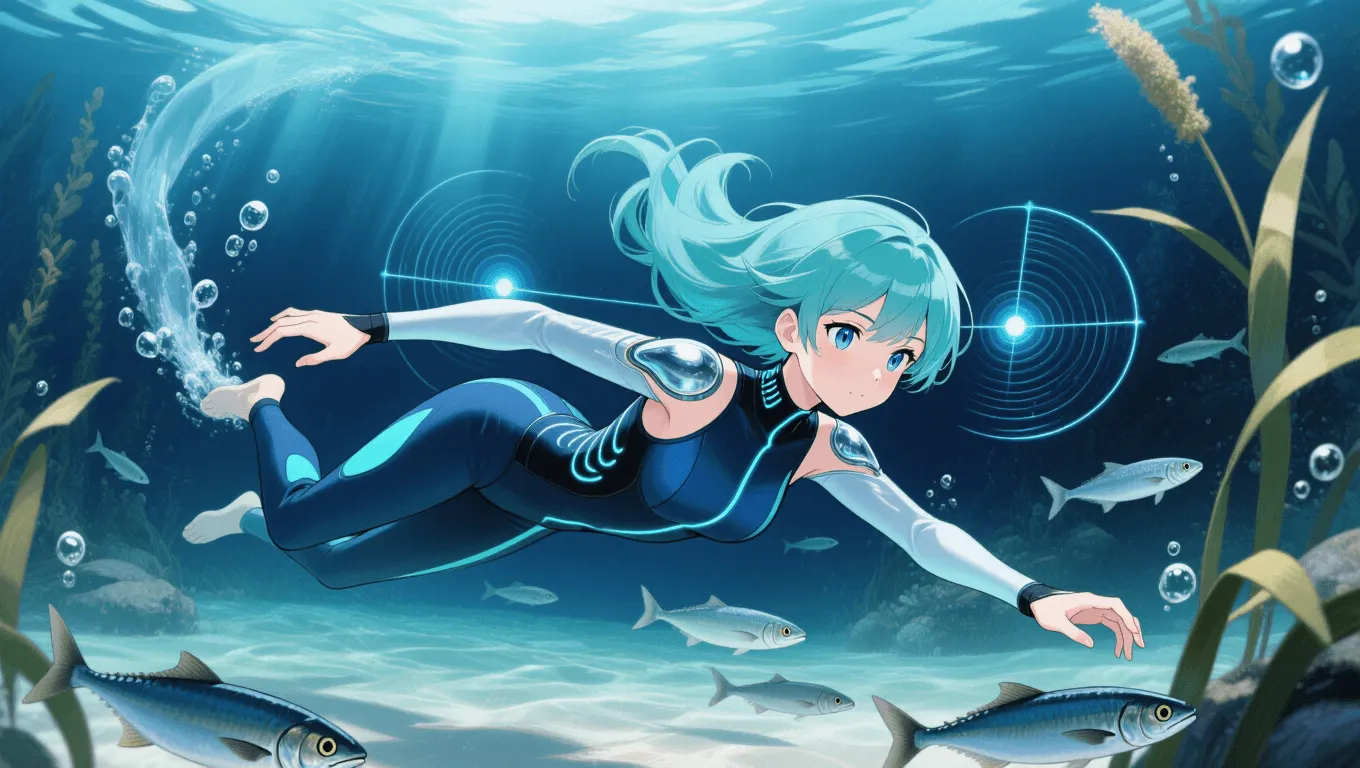
Intermediates achieve robust pressure resistance for deeper dives and improve hydrodynamic agility for pursuit or evasion. Lateral-line style sensing and basic sonar navigation emerge, enabling tracking through turbidity. Amphibious physiology stabilizes in both salt and fresh water; salinity shifts no longer cause cramps or dehydration. Combat uses 3D grappling, current-riding flanks, and coordinated signals with allies. Operating windows extend to hours underwater with minimal recovery.
Level 3
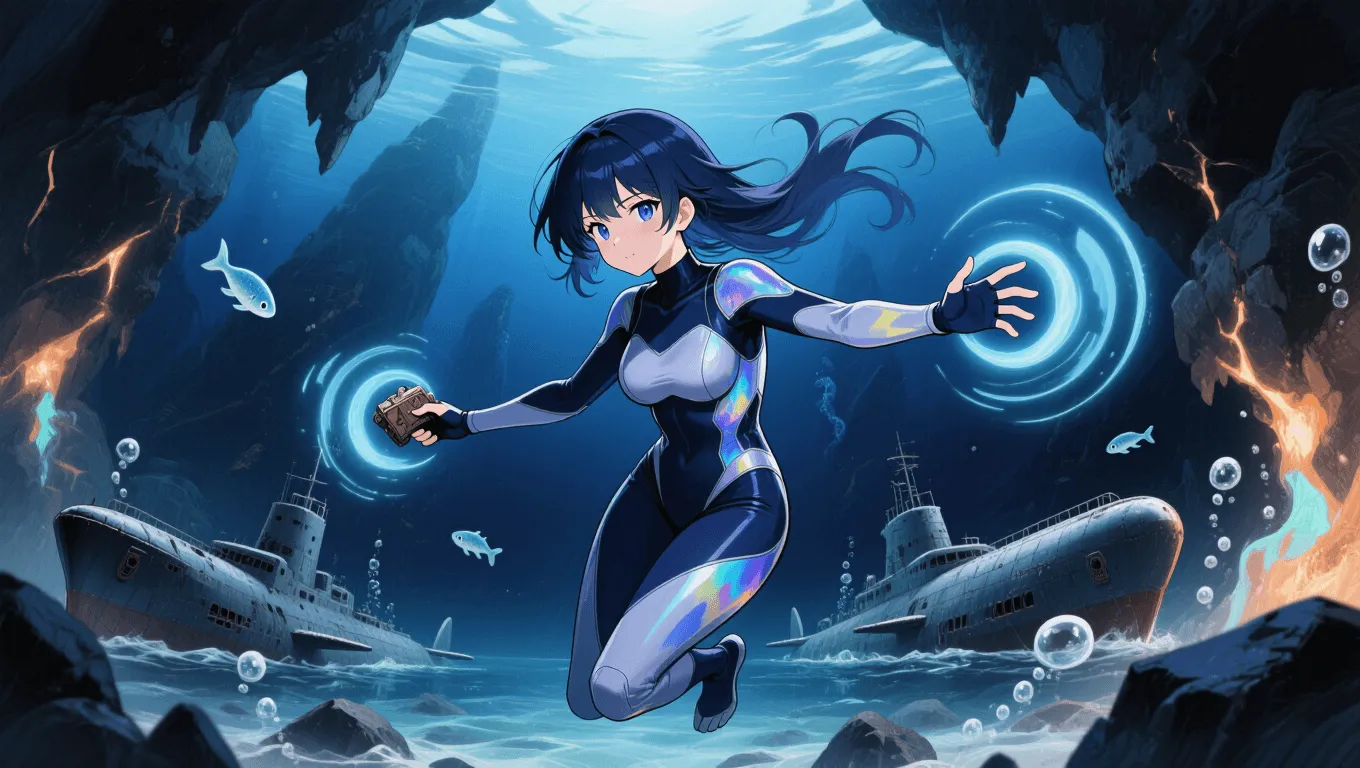
Masters thrive in abyssal environments with near-immunity to water pressure and cold. They can navigate solely by echolocation, read micro-currents for object detection, and maintain high-speed pursuit through caves and wrecks. Camouflage becomes adaptive, and their wake control approaches invisibility to sonar. Strategic feats include sabotage of armored hulls, covert base insertions via geothermal vents, and deep-sea artifact retrieval. On land, they retain superior fluid balance and resilience but remain strongest near water.
Limitations of using the Aquatic Adaptation
-
Hydration dependency
Prolonged time in arid or overheated conditions can cause rapid dehydration and performance loss. Some users require periodic immersion to maintain skin integrity or oxygenation efficiency. -
Temperature and energy cost
Cold water saps calories. Without adequate nutrition, even advanced bodies risk hypothermia during extended missions. Rapid thermal shifts can trigger muscle stiffness. -
Acoustic overload
Harbors and industrial zones create intense noise pollution. Enhanced senses may suffer from disorientation or headaches under sonar pings, depth-charges, or ship cavitation. -
Pollutants and toxins
Contaminants, oil dispersants, and algal toxins can foul gills and impair osmoregulation. Chemical warfare in water remains a serious threat, demanding filters or antidotes. -
Equipment incompatibility
Conventional gear corrodes or adds drag. Weapons and comms require specialized waterproofing; otherwise, they compromise stealth and mobility. -
Pressure equalization windows
Rapid ascents can still cause barotrauma if the user relies on modified lungs. Even with depth adaptation, certain physiological transitions demand disciplined ascent profiles. -
Limited advantage on land
While amphibious, peak performance depends on nearby water. Desert or high-altitude operations reduce the power’s tactical value.
Weakness against what other superpowers
-
Heat Manipulation / Pyrokinesis
Dehydration and steam burns compromise skin and gill function. Superheated air or sandstorms neutralize endurance away from water. -
Electrokinesis / Electric Discharge
Water conducts electricity; area shocks can stun or incapacitate even pressure-hardened users, especially in confined spaces. -
Cryokinesis / Blizzard Formation
Rapid freezing traps or immobilizes swimmers and can create ice barriers that sever escape routes or crush in ice-pack movement. -
Aerokinesis / Vacuum Generation
Forced aeration, vortex lifting, or localized vacuum can strip cover, disrupt buoyancy, and expose swimmers at the surface. -
Toxin or Biochemical Manipulation
Waterborne toxins or pH shifts undermine respiration and osmoregulation. Tailored biocides are especially dangerous. -
Vibration / Seismic Shock
Underwater shockwaves transmit efficiently, causing disorientation, ruptured membranes, or internal injuries. -
Light Manipulation / Blinding Strobe
High-intensity flashes scatter through particulates, overwhelming low-light vision and breaking target lock.
Synergistic Power Combos
- Hydrokinesis
Combine Aquatic Adaptation’s mobility with direct control of currents and pressure to generate riptides, whirlpools, or laminar “highways” for rapid strikes.
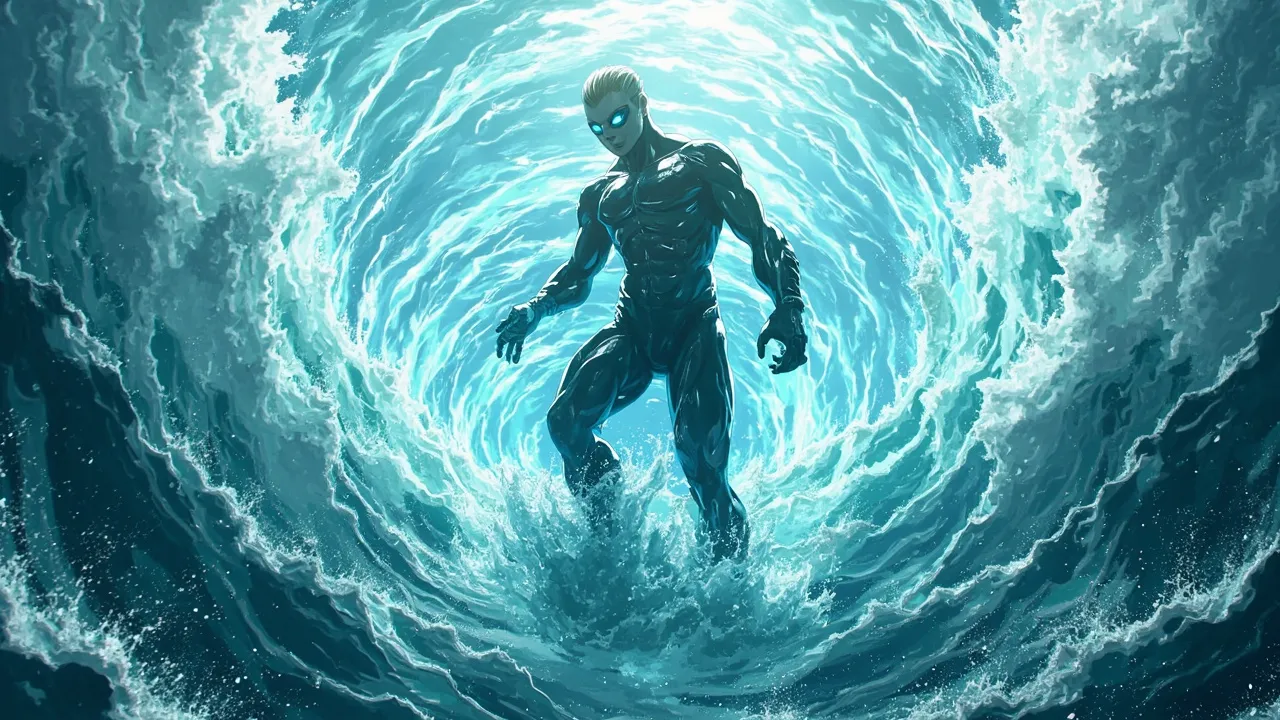
- Ice Manipulation
Use superior positioning to lure enemies into chokepoints, then seal passages with ice or create buoyant ice shields while retaining maneuverability under the sheet.

- Marine Telepathy / Animal Summoning
Coordinate with dolphins, orcas, and cephalopods for scouting, decoy tactics, netting maneuvers, and tool use.
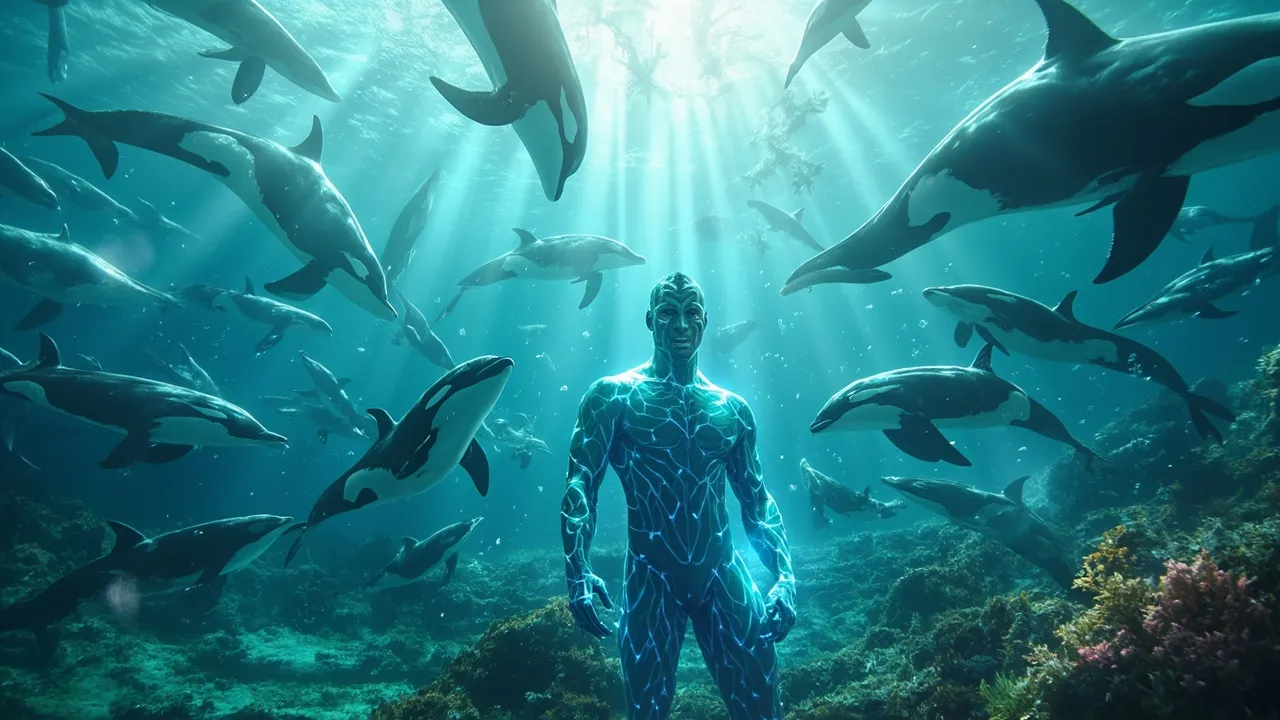
- Bio-Electricity
Layer conductive nets and precise, low-voltage pulses for non-lethal incapacitation. Adaptive bodies resist friendly shock profiles.

- Enhanced Vision / Night Mastery
Pair low-light acuity with thermal or electromagnetic perception to defeat camouflage and locate machinery in silt-outs.
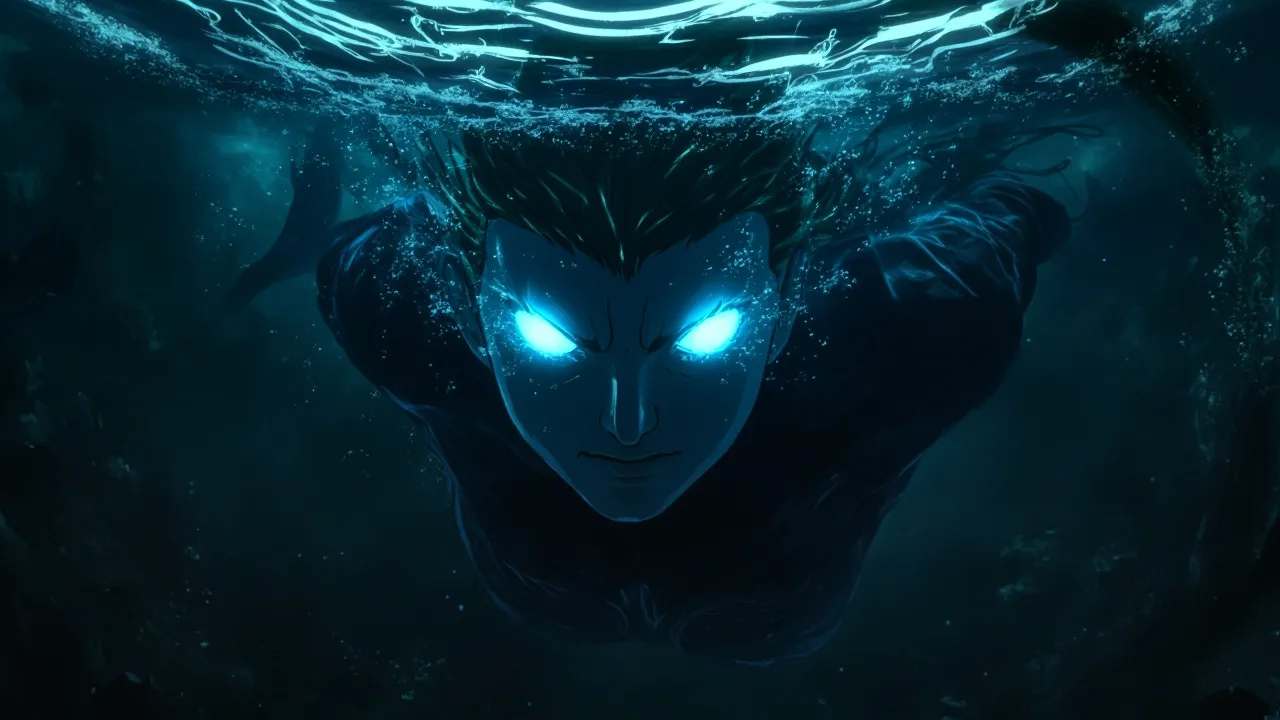
- Pressure Shields
Generate boundary layers that nullify incoming shockwaves, allowing safe operation near explosives or high-thrust propulsors.

For more power combinations and related abilities, browse our superpower wiki or roll a new idea with the random superpower generator.
Known Users
-
Aquaman (DC Comics) — Royal guardian of Atlantis known for deep-sea physiology and oceanic leadership.
-
Namor the Sub-Mariner (Marvel) — Amphibious monarch with extreme depth tolerance and elite swim speed.
-
Mera (DC Comics) — Atlantean warrior-queen renowned for underwater combat and hard-water constructs (separate power).
-
Aqualad / Kaldur’ahm — Trained operative with amphibious traits and advanced marine tactics.
-
Abe Sapien (Hellboy) — Investigative savant whose aquatic physiology enables deep-water missions.
-
The Deep (The Boys) — Celebrity hero with strong aquatic physiology and marine communication themes.
Explore more characters and compare abilities across our superpower wiki. When you’re ready to invent your own ocean-born champion, try the random superpower generator.
